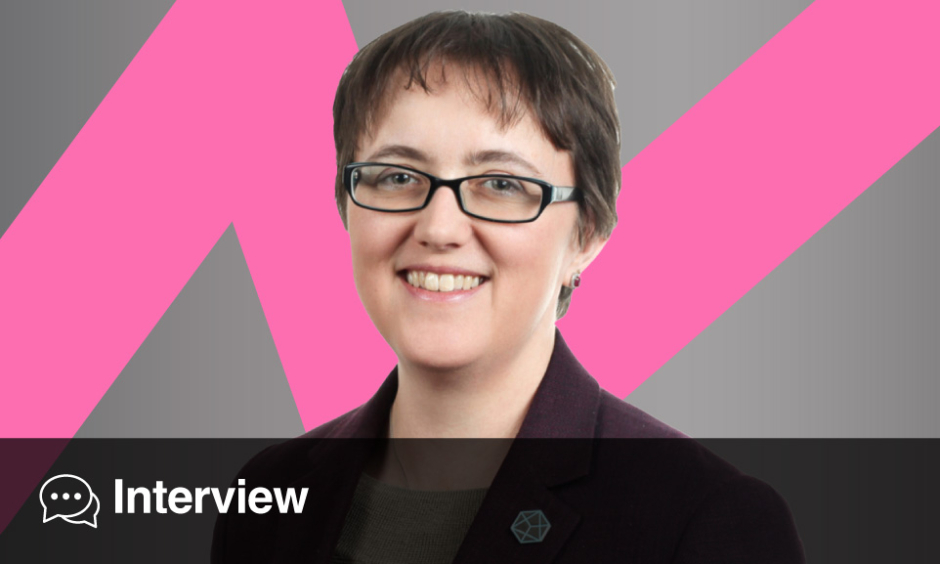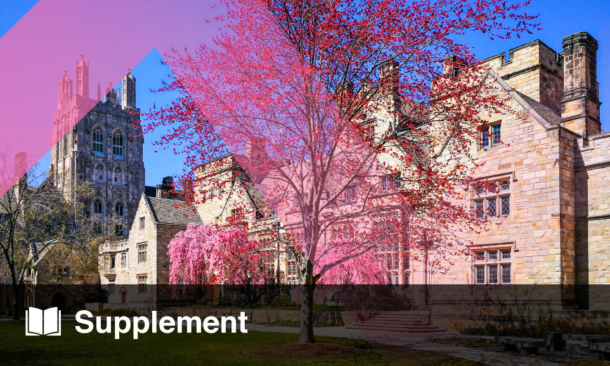Tara Spires-Jones | Professor of Neurodegeneration, UK Dementia Research Institute and Centre for Discovery Brain Sciences, University of Edinburgh, UK
Citation: Neurol AMJ. 2024; https://doi.org/10.33590/neurolamj/TWLY3235.
![]()
When did your interest in neurodegenerative diseases, and synapse degeneration in particular, begin?
I did my undergraduate degree in Texas, in biochemistry and French, but about halfway through my undergraduate work, I realized I was really fascinated by the brain. So, I chose to do a master’s and a PhD in neuroscience at the University of Oxford, UK, originally focusing on neurodevelopment. About halfway through my PhD, I got really interested in neurodegeneration, specifically focusing on synapses and plasticity, how amazing they are, how your brain can adapt to anything, and its environment. In the second half of my PhD, I started working on a Huntington’s disease mouse model, and we were investigating synaptic degeneration and how that could be prevented by environmental enrichment in the mice. Later, I focused on Alzheimer’s disease during my postdoctoral degree in Boston.
After completing your DPhil in Neuroscience at the University of Oxford, you went on to undertake a neurology research fellowship and work as an Assistant Professor at Massachusetts General Hospital (MGH) and Harvard Medical School. How did your time at MGH and Harvard Medical School shape your subsequent research and career?
That was a hugely influential time in my career because I had switched from Huntington’s disease and neurodevelopment to the Alzheimer’s field. It was also when I met my mentor, Brad Hyman, who hugely influenced my early career. I subsequently started my own research after Brad showed me his amazing microscopes. We talked about how important synapses are in Alzheimer’s disease, and that really captured my imagination as I’ve always been fascinated by synapses. So, during my postdoctoral degree, I focused on in vivo imaging of a live mouse brain, looking at synapses and pathology over time, which was very exciting. When I finished the postdoc, I got hired on as an instructor, which is a junior faculty position, and there I was able to secure funding and fellowships from the National Institute of Health (NIH). That’s when I started expanding beyond mice, not looking only at mouse models but at human postmortem brain tissues. That’s the work I built at MGH that then brought me to Edinburgh.
How did you come to pioneer techniques for human post-mortem high-resolution brain imaging to identify synaptic oligomeric tau accumulation?
That stems back to my time in Boston when I was a junior faculty member, looking at synapses. We found some amazing things in mice models. But our mouse models aren’t perfect, they have all sorts of caveats. And I thought it was important that we start looking at human disease tissue to understand more of what’s going on in the human brain. So, one of the techniques that I learnt from Steve Smith and Christina McKeever was called electron tomography, and they developed that for use in mouse tissue. But we realized that because it was a postmortem technique, we could do it in theory in human brains. So, I spent some time working with neuropathology colleagues, and some fantastic residents who would call me in the middle of the night when people donated their brains. We worked on a tissue preservation technique and introduced this into the human postmortem workflow at brain banking. This is now standard practice through brain banks around the world now, with colleagues in Barcelona, Mass General, and Edinburgh. This allows us to do something that we couldn’t do before; we can look inside individual synapses. We fix the tissue, we embed it in a hard plastic resin, and then we can section this tissue so that it’s actually thinner than an individual synapse, and that’s overcoming the limits of light microscopy. This enables us to really ask the question, is tau inside human brain synapses? That’s what we’ve been working on for the past few years.
Your research also aims to understand whether increasing synaptic resilience has a neuroprotective benefit. Can you briefly explain the concept of synaptic resilience and how this could be achieved in practice?
Your brain is amazing and can overcome a lot. A lot of people as they age will have clumps of pathological proteins in their brains that are associated with Alzheimer’s disease, but some of them don’t experience any symptoms and that is what we call resilience. This means the brain can have these proteins that we know are toxic without exhibiting any symptoms. One of the ways we think this can occur is because we have a really strong network, we have a lot of synapses, and our brain is able to make new connections and overcome the tissues that are caused by that pathology. Like when we have a stroke, we can actually recover some function because our brain can just rewire and make up for that damage. So that’s the concept of resilience. One of the things that fascinates me is, if you look at risk factors for dementia, studying in school actually has a protective effect. The more years of education you have, the less likely you are to develop dementia. We think that might be at least partly due to the building of a resilient brain network with a lot of connections. There are, of course, confounders with socioeconomic status for example, but we’re trying to dig into the underlying biology of that resilience. We’re looking at what’s the difference in the synapses between people who age well or age poorly as they get older cognitively.
You have an interest in translational neuroscience and were a founding member of the FENS-Kavli Network of Excellence. How did you become involved in the network and how has it grown since your involvement in 2014?
The network is not just about translational neuroscience, it’s about shaping the future of neuroscience with people who are in the early or mid-stages of their careers. This was an initiative that was a collaboration between the FENS-Kavli Network, which is the Federation of European Neurosciences and the Kavli Foundation, to encourage some people in their early and mid-career to talk about science policy for neuroscience, the future directions, and the network was amazing. I’m an alumnus now but was nominated for this post after moving back from the USA to the UK at a time when I didn’t know many people in Europe. The network helped me meet people from all across Europe, really smart people doing cutting-edge neuroscience, and we were able to share ideas, collaborate, and improve not only our own science but everyone’s science. So that was a fun experience, and I’m proud to still be an alumnus.
In your opinion, what measures can institutions take to enhance inclusivity, diversity, and career development in translational neuroscience?
This is something that is very close to my heart, and it’s a big question. Mainly, I focus on how we, as institutions and societies, can make neuroscience a more inclusive place. And not just that, but also, how do we make neuroscience a more robust and rigorous space? In the dementia space, we want to make sure that when we’re actually doing our own research, this includes people from diverse backgrounds as we want our research findings to be applicable to everyone, not just to a small subset of the population. We also, of course, want to have diverse minds and people from diverse backgrounds, working in the field, because the more smart people we have, the higher the chance that we will find things that will eventually help people living with dementia. We have several initiatives to ensure this, for example, we have what’s called the Athena SWAN Charter, which was a way of trying to include women, but it has since expanded to include other types of diversity. So, there are initiatives that help make the workplace inclusive, and I could talk about a wealth of them.
Alongside your work in research, you are President of the British Neuroscience Association and on the Advisory Board of Alzheimer’s Research UK. What are the main goals you hope to achieve in these positions?
I have a lot of goals in this role! The British Neuroscience Association is the national association for neurosciences in the UK, and I was really honored to be nominated to be president. And what we, as an organization are trying to do is, inform, connect, and influence. We want to make sure that we can inform both our membership and the wider public and policymakers about what neuroscience is and how neuroscience works. We want to connect people within the neuroscience space, within the UK and beyond, to be sure that we’re all working together because the more people working on things together, we think the faster things will progress. We also want to influence things like policy on inclusivity, research inclusivity, and policies to generate a rigorous research culture. One of the things in my tenure that I’m passionate about is delivering training programs. We are going to help train our members, especially our earlier career researchers, in things like experimental design, statistics, and the various career paths available to them. A UK-specific issue is that our PhD training periods are very short, about 3 or 4 years, and so you don’t get any formal taught components in many PhDs. Therefore, to make our PhD graduates competitive with international PhD graduates, we want to upskill them and make sure that we have the opportunity to give them the skills that they need to be competitive in a global market.
You were awarded the Inge Grundke-Iqbal Award for Alzheimer’s Research by the Alzheimer’s Association this year. The award is presented to the senior author of the most impactful study published in Alzheimer’s research over the preceding two years. Please can you talk about the research that this award refers to?
It was such an honor to win this prize, especially because it is in honor of Dr Inge Grunder Iqbal, who was one of the pioneers in the tau field. She was one of the people who discovered that tau becomes entangled and was the first person to make antibodies to label tau. So, we have really stood on the shoulders of giants like her. We wanted to look at whether tau is inside individual synapses in the human brain, and whether it could be going from one brain region to another brain region by jumping through those synaptic connections. Because in Alzheimer’s, you have clumps of tau inside neurons, and they spread through the brain, they don’t show up all over the brain all at once. Specifically, they start in the medial temporal lobe, and then, in a really stereotypical fashion, they march through the brain through synaptic circuits. And wherever the tau goes, neurons die, and whenever the tau moves, the symptoms get worse. So, we really want to understand how tau is moving, and how it gets out of one brain region into the other. In this study, we used high-resolution imaging to look inside individual synapses, and we found specifically oligomeric tau. We found that oligomeric tau was present in pre- and post-synaptic terminals and in opposed pairs, so it could be jumping from one side to the other. We were seeing that in brain regions, even where there wasn’t a big pathology, there were classic neurofibrillary tangles, indicating that this is probably an early part of the disease process. Thus, overall, we have indirect evidence that tau can potentially spread through the brain via these synaptic connections. We also discuss animal model data that shows that it spreads through synaptic connections, at least in animals it does. We’re really excited about it because we think that if we could stop the tau from jumping through the brain, if we could stop it from travelling, we could stop the disease symptoms, and then the brain’s resilience could hopefully make us a little bit better.
What are some of the most highly anticipated research findings in dementia being presented at this year’s Alzheimer’s Association International Conference (AAIC)?
There are so many! This is a really amazing conference! One session in particular that I’ve heard a lot of people at the conference talking about is the Lancet Commission’s meta-analysis of risk factors for dementia. They’ve got these 14 theoretically modifiable risk factors like head injury and hearing loss, and they’ve added a couple of new ones to the new analysis. And that’s really important because it’s a huge analysis of all the work out there, and while you can’t prove causation, robust associations allow scientists to go and investigate whether this relationship is causal. There were also some clinical trial results that are quite exciting. My favorite session was the tau session. Brad Hyman and Maria Spillantini were the chairs of the session, and they presented some really beautiful data, and it was just amazing.








